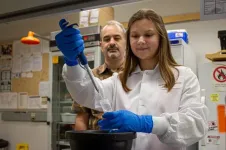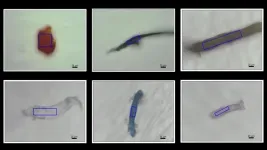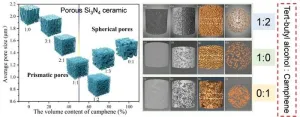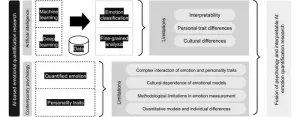(Press-News.org) Using state-of-the-art energy efficiency technologies to renovate existing properties and construct new ones could enable Europe’s construction sector to almost eliminate its carbon emissions by 2060, a new study suggests.
Published in the journal Renewable and Sustainable Energy Reviews, the research is the first to fully assess the potential for energy demand reduction across the construction sectors of the United Kingdom and all European Union member states.
It highlights that 75% of Europe’s building stock is currently classed as energy inefficient, with total floor space also projected to increase by more than 20% over the next three decades.
In spite of this, employing a combination of technologies including solar energy and heat pumps within both residential and non-residential properties could reduce the total energy used to heat and cool buildings by up to 97%.
With growing concerns over energy security, particularly in light of recent geopolitical events, the researchers say that harnessing such technologies could significantly reduce energy costs as well as enhancing people’s health and quality of life.
More broadly, they say, transitioning towards a net-zero building sector offers substantial potential to mitigate the impacts of climate change and play a pivotal role in meeting the targets set out in the Paris Agreement and other global climate goals.
The study’s lead author is Dr Souran Chatterjee, Lecturer in Energy Transitions at the University of Plymouth, who said: “The building sector can play a pivotal role in mitigating the impacts of climate change. Our study unequivocally highlights the potential for reducing building energy demand, and the crucial role it can play in achieving climate neutrality targets right across the UK and Europe. Many of these demand-side actions in the building sector would also enhance well-being, having a positive impact on people’s health and productivity, and creating more jobs. It is important to understand that the more we delay, the more energy we will need to power our homes and workplaces over a longer period of time and that will hinder our ability to achieve climate targets.”
In addition to the University of Plymouth, the study also involved researchers at the Central European University, University of Szeged, and the Institute for Geological and Geochemical Research.
They used a mathematical model called the High-Efficiency Building (HEB) energy model to calculate the energy demand reduction potential – and the net-zero feasibility of the building sector – for the UK and each of the European Union Member States.
Among the calculations were that the energy required for cooling residential buildings across Europe could be reduced by up to 86% by 2050, while for non-residential properties the figure could be around 76%, if the sector aimed for its most ambitious net-zero targets.
This could be particularly beneficial in countries such as Italy, France, Greece and Spain where there is greater reliance on air conditioning as part of building projects.
For heating, aiming for the most ambitious targets could lead to a reduction in energy demand of more than 80% by 2050, and for hot water the energy demand could be reduced by around 50%.
Increasing the numbers of heat pumps and other on-site energy production within future residential developments could increase the demand savings for both heating and hot water to around 90%.
The study also showed that if comprehensive renovations and efficient constructions are not implemented. the total thermal energy demand of the building sector could increase by up to 7% by 2060.
END
Demand-side actions could help construction sector deliver on net-zero targets
2024-09-20
ELSE PRESS RELEASES FROM THIS DATE:
Research team discovers molecular mechanism for a bacterial infection
2024-09-20
Virginia Tech researchers have learned how bacteria manipulate molecules to infect the host organism.
Daniel Capelluto and his research team have discovered the mechanism by which the bacterial pathogen Shigella flexneri, the causative agent of dysentery, manipulates molecular activity to assure its survival against its host’s natural defenses. Their findings were recently published in Structure, a Cell Press journal that supports open access.
“This infection strategy may be employed by other bacteria, making this research a potential foundation for understanding the molecular mechanisms underlying various bacterial infections,” said Capelluto, associate professor ...
What role does a tailwind play in cycling’s ‘Everesting’?
2024-09-20
WASHINGTON, Sept. 20, 2024 – Within the cycling realm, “to Everest” involves riding up and down the same mountain until your ascents total the elevation of Mt. Everest — 8,848 meters.
After a new cycling “Everesting” record was set a few years ago, a debate ensued on social media about the strong tailwind the cyclist had on climbs — 5.5 meters per second (20 kilometers per hour or 12 miles per hour) — when he set the record. To what extent did the tailwind help him? Should limits be set on the allowed ...
Projections of extreme temperature–related deaths in the US
2024-09-20
About The Study: This cross-sectional study found that extreme temperature–related deaths in the contiguous U.S. were projected to increase substantially by mid–21st century, with certain populations, such as non-Hispanic Black and Hispanic adults, projected to disproportionately experience this increase. The results point to the need to mitigate the adverse outcome of extreme temperatures for population health.
Corresponding Author: To contact the corresponding author, Sameed Ahmed M. Khatana, MD, MPH, ...
Wearable device–based intervention for promoting patient physical activity after lung cancer surgery
2024-09-20
About The Study: In this nonrandomized clinical trial, integration of perioperative exercise interventions using wearable devices improved physical activity (especially moderate-to-vigorous physical activity) and dyspnea at 6 months after lung cancer surgery compared with usual care. This finding suggests a promising role for wearable devices in personalizing perioperative rehabilitation strategies.
Corresponding Authors: To contact the corresponding authors, email Danbee Kang, PhD, (dbee.kang@gmail.com) and Hye Yun Park, MD, (hyeyunpark@skku.edu).
To access ...
Self-compassion is related to better mental health among Syrian refugees
2024-09-20
Displaced individuals experience high rates of emotional distress, depression and anxiety resulting from trauma and stress from displacement and loss. Their mental health may suffer further due to a lack of resources, language barriers, and discrimination during resettlement.
A new study by University of California San Diego researchers reports that displaced Syrian refugees with higher reported self-compassion were less likely to report poor mental health outcomes. The study was published in PLOS ONE on September 19, 2024.
Sarah Alsamman, a student at UC San Diego School of Medicine, and Wael Al-Delaimy, M.D., Ph.D., professor of public health at the Herbert Wertheim School of Public ...
Microplastics found in coral skeletons
2024-09-20
Fukuoka, Japan—Researchers from Japan and Thailand investigating microplastics in coral have found that all three parts of the coral anatomy—surface mucus, tissue, and skeleton—contain microplastics. The findings were made possible thanks to a new microplastic detection technique developed by the team and applied to coral for the first time.
These findings may also explain the ‘missing plastic problem’ that has puzzled scientists, where about 70% of the plastic litter that has entered the oceans cannot be found. The team hypothesizes ...
Stroke rates increasing in individuals living with SCD despite treatment guidelines
2024-09-20
(WASHINGTON, September 20, 2024) –The incidence of stroke continues to increase for adults and children living with sickle cell disease (SCD) despite the Stroke Prevention Trial in Sickle Cell Anemia (STOP) establishing standards of care like transfusions and tests to measure blood flow in the brain for those deemed high-risk, according to a study published today in Blood.
Individuals living with SCD, the most common inherited red blood cell disorder in the United States, are especially susceptible to cerebrovascular events (CVEs). This includes ischemic or hemorrhagic strokes, when a blood vessel leading to the brain is ...
Synergistic promotion of dielectric and thermomechanical properties of porous Si3N4 ceramics by a dual-solvent template method
2024-09-20
Radomes and wave-transmitting antenna windows are critical structural components in aircraft, protecting radar antennas from external interference while ensuring reliable communication. Currently, the most widely used wave-transmitting materials are ceramics based on oxides and nitrides. Si3N4 ceramics, with their high melting point and superior mechanical properties, are considered promising candidates for hypersonic vehicle applications. However, the dielectric and thermal insulation properties of dense Si3N4 ceramics need improvement to meet the precise guidance and thermal protection demands of high-speed flight. By adjusting the microstructure, it is possible to enhance the ...
Korean research team proposes AI-powered approach to establishing a 'carbon-neutral energy city’
2024-09-20
A joint research team from the Renewable Energy System Laboratory and the Energy ICT Research Department at the Korea Institute of Energy Research (KIER) has developed key technologies to realize "Urban Electrification" using artificial intelligence (AI).
Urban electrification aims to reduce the use of fossil fuels and introduce renewable energy sources, such as building-integrated solar technology, to transform urban energy systems. While this concept is relatively unfamiliar in the Republic of Korea, it is being promoted as a key strategy in the U.S. and Europe for achieving carbon neutrality and creating sustainable urban environments.
In ...
AI is learning to read your emotions, and here’s why that can be a good thing
2024-09-20
Using a fusion of traditional and novel technological methods, researchers are hoping to better quantify emotions to transform the face of the emotion quantification field
Human emotions are complex and are not always easily able to be boiled down to a recognizable pattern. Determining one’s emotional state can be difficult human-to-human, and the many nuances of existence as an emotional entity seem impossible to train a non-human entity to understand, identify and learn from. However, a considerable amount of work and research has been put into training artificial intelligence (AI) to observe, quantify and recognize various states of emotion in humans. ...






